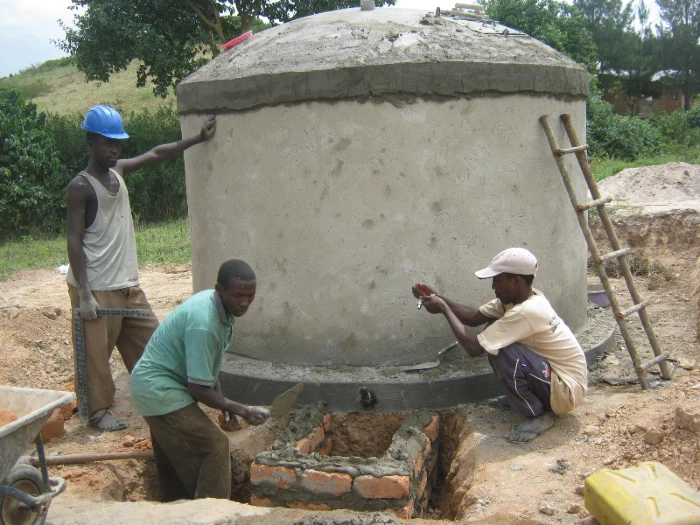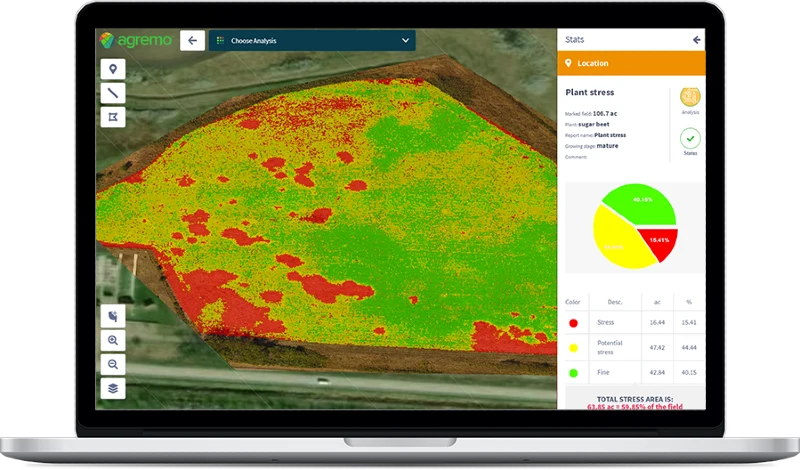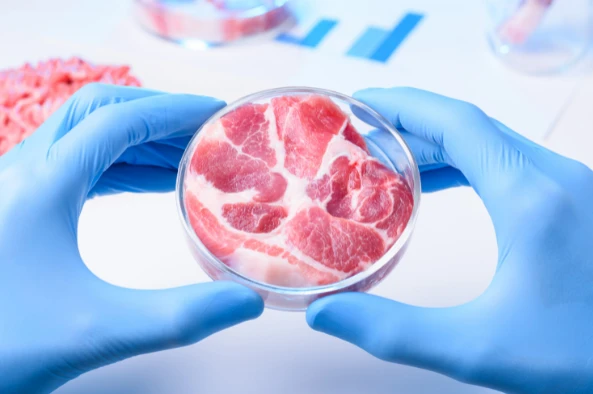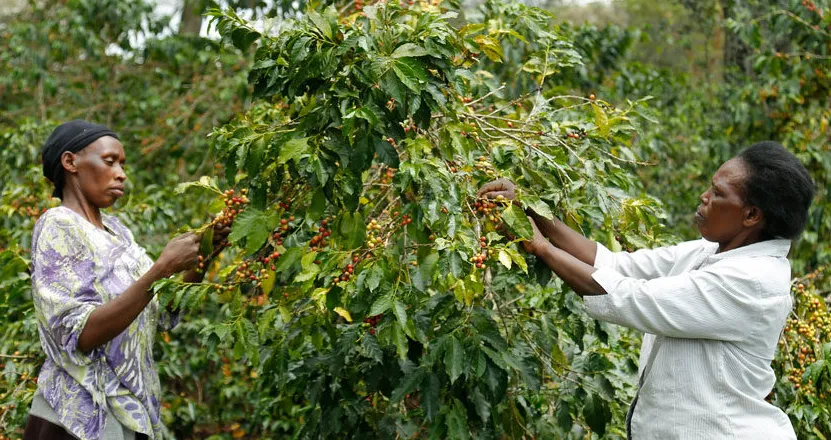In the face of a rapidly changing climate and a growing global population, the recent COP28 summit has turned a spotlight on an urgent issue: the interplay between our food systems and environmental sustainability. More than 130 nations have pledged to integrate food systems, from production to consumption, into their strategies for combating climate change.
This declaration, though not detailed in specific actions, brings crucial attention to a delicate balance. The world’s food supply is increasingly threatened by extreme weather, while simultaneously, it’s a major contributor to greenhouse gas emissions, accounting for one-third of emissions from human activities. This intersection of agriculture and climate change is why agricultural innovation has become a pivotal topic in international climate discussions.
As we stand, our agricultural systems feed 8 billion people, yet many lack proper access. To nourish a projected 10 billion by 2050, a significant expansion of croplands will be necessary, risking further deforestation and exacerbating climate change. Moreover, common practices like using synthetic fertilizers also add to the problem.
However, there’s a silver lining: innovations are on the horizon. The Innovation Commission for Climate Change, Food Security and Agriculture, initiated by Nobel laureate Michael Kremer, has identified seven key areas of innovation. These innovations promise to ensure sufficient food production, minimize greenhouse gas emissions, and potentially impact hundreds of millions of lives.
In this article, we delve into these innovations, exploring how each could help balance the scales of food production and climate sustainability. From accurate weather forecasting to microbial fertilizers, and innovative livestock feeding practices, we unravel the benefits, challenges, and the transformative potential each holds.
Accurate, Accessible Weather Forecasts
In an era where extreme weather events have become the norm, accurate weather forecasting has emerged as a crucial tool for farmers worldwide. The ability to predict weather accurately is more than just convenience; it’s a strategic necessity. Farmers rely on this information for making critical decisions: when to plant, irrigate, apply fertilizers, and harvest. Unfortunately, many farmers, especially in low- and middle-income countries, lack access to detailed and reliable forecasts.
Transforming Agriculture with Advanced Forecasts
Investments in technology to improve data collection and dissemination of forecasts can have a profound impact. For instance, accurate state-level forecasts of seasonal monsoon rainfall in India could revolutionize farming practices, optimizing sowing and planting times.
This could result in an estimated $3 billion in benefits over five years, against a relatively modest investment of around $5 million. In Benin, providing accurate forecasts via text message could save farmers between $110 to $356 annually, a substantial amount in the local context.
Opening Up Forecast Accessibility To Everyone Has Its Challenges
Sharing meteorological information among neighboring countries through platforms like the World Meteorological Organization’s Climate Services Information System could enhance the accuracy of forecasts. This cross-border cooperation can play a pivotal role in preparing farmers for climate variability, ultimately contributing to food security and economic stability.
While the potential benefits are immense, challenges in implementation and resource allocation remain. There’s a need for significant investment in infrastructure and technology to collect and distribute weather data effectively. Moreover, making this information accessible and understandable to farmers, particularly in remote or under-resourced areas, requires innovative solutions and sustained effort.
In short, accurate and accessible weather forecasting stands as a beacon of hope in the fight against climate-induced agricultural challenges. By embracing this innovation, we can empower farmers, optimize agricultural practices, and pave the way for a more sustainable and resilient food system.
Microbial Fertilizers: Superior Crop Nutrition & Rethinking Fertilization for Sustainability

In the quest for high crop yields, nitrogen fertilizer has been a go-to solution, but its production, heavily reliant on natural gas, is a significant source of greenhouse gases. Here’s where microbial fertilizers come into play. These fertilizers use beneficial bacteria to enhance nutrient absorption by plants and soil, potentially reducing the need for synthetic nitrogen fertilizers.
The Environmental and Economic Impact
Studies show that microbial fertilizers can boost legume yields by 10% to 30% in healthy soils, translating into billions in potential benefits. For example, soybean farmers in Brazil have successfully used rhizobia-based microbial fertilizers for decades, enhancing yields while cutting costs on synthetic fertilizers. This technique, though established in Brazil, remains underutilized globally. The expansion of microbial fertilizers presents an opportunity to enhance soil health and mitigate climate impact.
Challenges in Adoption and Scaling
Scaling up microbial fertilizers poses its own set of challenges. Funding for extensive testing in diverse geographical regions is crucial. Furthermore, educating farmers about the benefits and application of these fertilizers is essential for widespread adoption. The transition from traditional to microbial fertilizers also requires supporting infrastructure and market readiness to handle new products.
Despite these challenges, microbial fertilizers hold immense promise. They offer a sustainable alternative to traditional fertilizers, with potential benefits for farmers, the environment, and the global food supply. Investments in research, development, and farmer education could pave the way for these fertilizers to become a cornerstone of sustainable agriculture.
Reducing Methane from Livestock
Livestock, particularly cattle, are major contributors to greenhouse gas emissions, responsible for about two-thirds of agriculture’s emission footprint. With the global demand for beef expected to surge by 80% by 2050, finding ways to reduce these emissions is not just beneficial; it’s imperative.
Innovative Feeding Practices to Cut Methane
Several cutting-edge methods are being explored to reduce methane emissions from livestock, specifically targeting enteric fermentation, a natural digestive process that leads to methane production. The inclusion of additives like algae, seaweed, lipids, tannins, or certain synthetic compounds in cattle feed has shown promise. These additives can alter the digestive process, significantly reducing methane emissions by as much as 25% to nearly 100% in some cases.
Dual Benefits But Challenges in Cost and Scaling
Reducing methane emissions isn’t just good for the environment; it also makes economic sense. When cattle produce less methane, they utilize their energy more efficiently, potentially increasing growth and milk production. This can translate into higher yields and profits for farmers.
Despite the clear benefits, the cost of implementing these feeding practices remains a hurdle. Research and development, along with private investment, are needed to bring these solutions to scale and make them more affordable. Additionally, educating farmers about these methods and demonstrating their long-term economic benefits will be crucial for widespread adoption.
Gene Editing: A Future Possibility
Looking to the future, gene editing presents another intriguing avenue for reducing methane emissions, either by modifying livestock directly or altering the microorganisms in their digestive systems. While this technology is still in its infancy, it holds significant potential for sustainable livestock farming.
Enhancing Agriculture with Rainwater Harvesting

In an era of unpredictable weather patterns and increasing water scarcity, rainwater harvesting emerges as a critical innovation for sustainable agriculture. Effective rainwater harvesting can revolutionize how communities manage water resources, especially in arid and semi-arid regions.
How Rainwater Harvesting Supports Agriculture
Rainwater harvesting involves collecting and storing rainwater for agricultural use. This method can significantly reduce dependence on unreliable and diminishing groundwater sources. It enables farmers to irrigate crops more effectively, improving yields and ensuring food security during dry spells.
The benefits of rainwater harvesting extend beyond just agricultural productivity. It helps in conserving water, reducing soil erosion, and preserving local ecosystems. Economically, it can lower farmers’ water procurement costs and increase resilience against climate change-induced water scarcity.
Despite its potential, the widespread adoption of rainwater harvesting faces hurdles. These include the need for initial investment in infrastructure, like storage tanks and collection systems, and the challenge of managing and maintaining these systems. Moreover, educating farmers and communities about the techniques and benefits of rainwater harvesting is essential for its success.
Collaboration Is Key for Success & That May Be A Problem
Successful implementation of rainwater harvesting requires collaboration between governments, NGOs, and local communities. Governments can provide subsidies or incentives for setting up harvesting systems, while NGOs can play a crucial role in training and education. Community engagement is key to ensuring the sustainability and effectiveness of these systems.
Digital Agriculture: High-Tech Precision Farming Must Be Widely Accessible
In the quest to feed a growing population sustainably, digital agriculture has emerged as a transformative tool. This approach involves using technology to make farming more precise and efficient. It includes practices like precision irrigation, targeted fertilizer application, and smart pest management.
Digital agriculture can significantly increase crop yields and reduce waste. By applying water, fertilizers, and pesticides more precisely, farmers can’t only save resources but also minimize environmental impact. This precision leads to healthier crops, better use of land, and ultimately, more sustainable farming practices.
Lowering the cost of digital agriculture is key to its widespread adoption.
Right now, the high cost of technology, such as sensors, drones, and data analysis tools, can be prohibitive for small-scale farmers. Making these technologies more affordable and user-friendly is crucial for bringing the benefits of digital agriculture to a broader audience. By reducing costs, small and medium-sized farms can embrace these technologies, leading to increased productivity and sustainability. This democratization of technology is vital for the growth of precision farming globally.
Despite its potential, the adoption of digital agriculture faces challenges beyond cost.
We’re talking about things like the need for technological literacy among farmers, reliable internet connectivity in rural areas, and data privacy concerns. But first, farmers must be convinced of the tangible benefits of these technologies to their operations and income.
Governments and agri-tech companies can play a crucial role in overcoming these barriers. Subsidies or financial incentives for adopting digital tools, along with educational programs to increase technological literacy, can encourage more farmers to transition to digital agriculture. Furthermore, research and development aimed at creating cost-effective and easy-to-use digital tools will be crucial for the widespread adoption of these technologies.
Ultimately, digital agriculture empowers farmers with precise, actionable information, enabling them to make better decisions for their crops and the environment. As technology advances and becomes more accessible, we can expect to see a significant transformation in agricultural practices, driving forward a more sustainable and productive global food system.
Alternative Proteins: We Need An Easier, Sustainable Solution for Future Diets
As the global population grows and becomes more affluent, the demand for protein, particularly animal protein, is rising. This increase in demand poses significant environmental challenges, including higher greenhouse gas emissions and greater land and water usage. Alternative proteins present a sustainable solution to meet this growing demand while minimizing environmental impact, or at least, that’s what everyone assumes.
Diversity of Sources of Alternative Proteins Is Important
Alternative proteins include plant-based sources like legumes and soy, as well as more innovative sources like lab-grown meats and insect protein. These alternatives offer the potential to significantly reduce the environmental footprint of our diets. For instance, producing plant-based proteins typically requires less land, water, and energy compared to traditional livestock farming.
Aside from their environmental benefits, alternative proteins can offer diverse nutritional profiles and cater to various dietary needs and preferences. They can also contribute to food security by providing additional and potentially more affordable sources of protein.
Despite their benefits, several barriers hinder the widespread adoption of alternative proteins. These include consumer preferences, cultural acceptance, and the challenge of achieving flavors and textures comparable to traditional meats. Additionally, scaling up production to make these proteins affordable and widely available is a significant hurdle.
Innovation and Investment Will Make Or Break Sustainable Proteins
Innovation in food technology and increased investment are key to overcoming these barriers. Continued research and development can improve the taste, texture, and nutritional content of alternative proteins, making them more appealing to consumers. Public awareness campaigns and educational efforts can also play a role in changing perceptions and encouraging the adoption of these sustainable food sources.
As we look towards a future where sustainable food production is paramount, the role of alternative proteins becomes increasingly crucial. With concerted efforts in research, investment, and public education, alternative proteins have the potential to become a mainstay in diets worldwide, contributing to a more sustainable and resilient food system.
Insurance and Social Protections: Safeguarding Farmers Against Climate Risks
Farmers are often the first to feel the impacts of climate change, with extreme weather events like droughts, floods, and storms posing severe threats to their livelihoods. In this context, insurance and other social protection mechanisms are vital in helping farmers manage these risks and recover from such events.
Why Farmers Need A Long-term, Credible Financial Safety Net
Agricultural insurance can provide farmers with financial compensation in the event of crop failures or livestock losses due to extreme weather. This financial support is crucial in helping them to recover and continue their farming operations. Moreover, insurance can encourage farmers to invest in more sustainable practices by reducing the financial risks associated with these investments.
Unfortunately, implementing effective insurance schemes in agriculture is challenging.
These challenges include determining fair premiums, ensuring payouts are timely and adequate, and covering a wide range of potential risks. In addition, many small-scale farmers in developing countries lack access to such insurance products.
Beyond insurance, other forms of social protection, such as subsidies, grants, and safety net programs, are essential. These can provide critical support during times of crisis, helping farmers to sustain their livelihoods and continue to contribute to food security.
Government and Private Sector Involvement
For these systems to be effective, they require collaboration between governments, the private sector, and international organizations. Governments can play a key role in subsidizing premiums or providing direct financial support. Meanwhile, the private sector can innovate in creating more accessible and affordable insurance products.
Developing robust insurance and social protection systems for farmers is an important step in building a resilient agricultural sector. By safeguarding farmers against the impacts of climate change, we can ensure a stable and sustainable food supply for the future.
Innovations at the Forefront of Sustainable Agriculture

The recent COP28 summit has highlighted a crucial intersection: our food systems and the climate crisis. Addressing this nexus requires innovative solutions that not only ensure food security for a growing global population but also mitigate the environmental impact of agriculture. The seven areas of innovation we’ve explored — from accurate weather forecasting to alternative proteins — hold the key to transforming our agricultural practices.
The Path Ahead Is Full of Challenges
These innovations present a hopeful vision for the future of agriculture: one where we can feed the world sustainably and responsibly. Accurate, accessible weather forecasts can empower farmers to make informed decisions; microbial fertilizers and alternative proteins offer environmentally friendly alternatives to traditional practices; and innovations like digital agriculture and rainwater harvesting can significantly enhance the efficiency and sustainability of farming.
While the potential is enormous, so are the challenges. Implementing these innovations requires investment, research, and a commitment to educating and supporting farmers. Moreover, effective insurance and social protection mechanisms are essential to protect farmers against the vagaries of climate change.
A Collective Effort
As we move forward, it’s clear that a collective effort is needed. Governments, private sectors, NGOs, and communities must come together to invest in these innovations, scale them up, and ensure they’re accessible to all farmers, regardless of their size or location. This collaboration isn’t just about advancing agricultural technology; it’s about building a resilient, sustainable future for our planet and its inhabitants.























